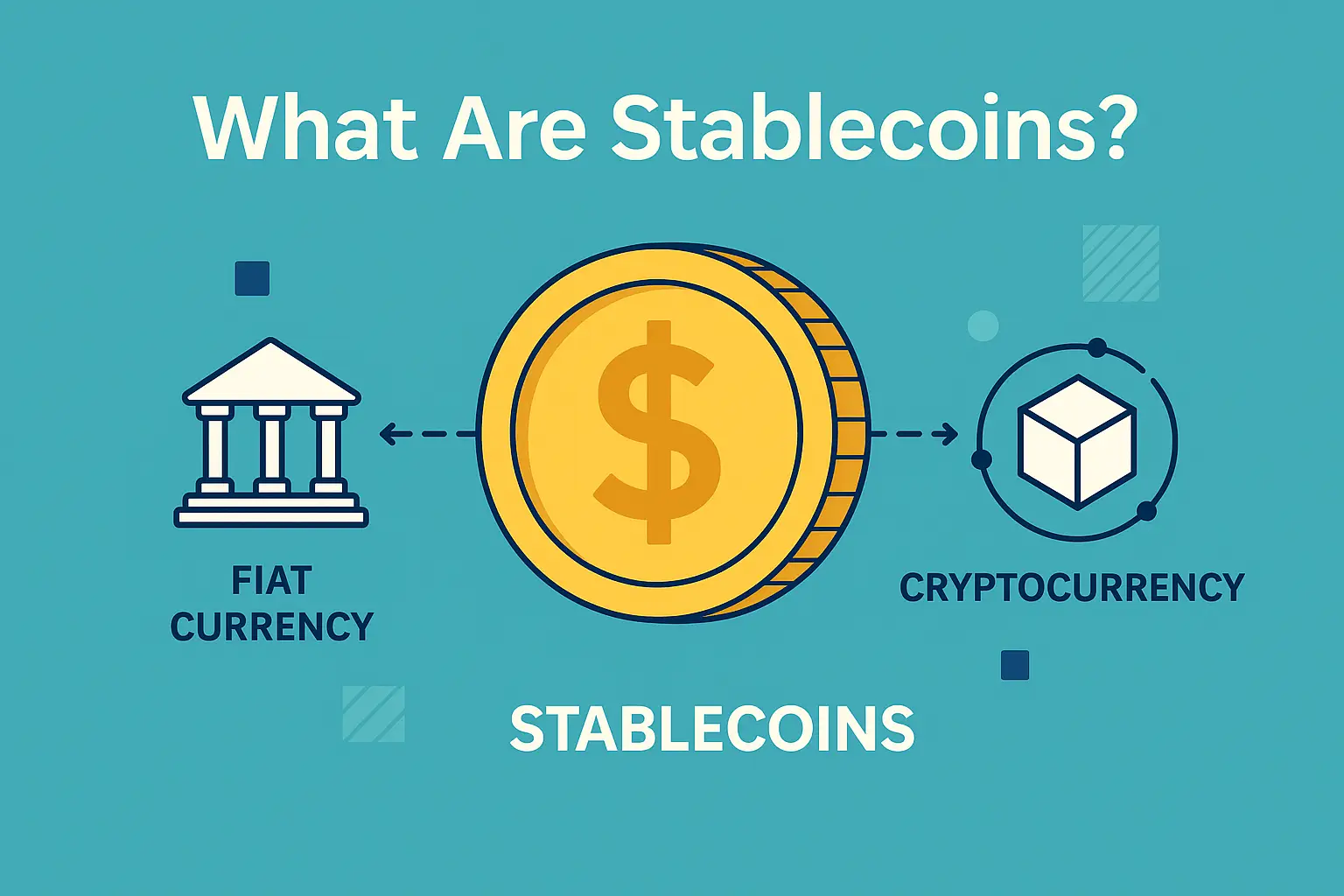💵 What Are Stable coins? Understanding Their Role in Cryptocurrency
🔍 Introduction: What Are Stablecoins?
Have you ever wondered why crypto investors talk about stablecoins? In the volatile world of digital currencies, stable coins have emerged as a safe harbor. So, what are stablecoins? Let’s break it down.
Stablecoins are a special type of cryptocurrency designed to maintain a stable value — unlike highly volatile assets like Bitcoin or Ethereum. They are usually pegged to a stable asset such as the US dollar (USD), making them ideal for daily transactions and as a safe space for traders.
⚡️ Why Do We Need Stablecoins?
Cryptocurrency is revolutionary, but its biggest challenge is volatility. Prices can rise or fall by 10–30% in a single day, making it challenging for daily commerce or long-term planning.
Here’s where stable coins come into play:
- 🏁 Minimize price fluctuations
- 💳 Simplify payments and online purchases
- 🔐 Maintain value in a turbulent market
- 💰 Serve as a bridge between fiat and crypto
🪙 How Do Stablecoins Maintain Their Value?
Stable coins maintain their value by being pegged or backed by other assets. They fall into three common categories:
1️⃣ Fiat-Collateralized Stablecoins
Backed by traditional fiat currency (like USD or EUR).
✅ Examples: USDT (Tether), USDC (USD Coin)
2️⃣ Crypto-Collateralized Stablecoins
Backed by other cryptocurrencies.
✅ Examples: DAI (backed by Ethereum)
3️⃣ Algorithmic Stablecoins
Stability achieved through algorithms and smart contracts (no direct backing).
✅ Example: FRAX, Ampleforth (AMPL)
💳 Common Use Cases of Stablecoins
1️⃣ Trading
Traders use stable coins as a safe space when moving in and out of trades.
2️⃣ Cross-Border Payments
Send payments across borders quickly and cheaply, regardless of currency fluctuations.
3️⃣ Decentralized Finance (DeFi)
Use stablecoins in lending, borrowing, and yield farming platforms.
4️⃣ Day-to-Day Transactions
Spend stablecoins for goods and services — more predictable than volatile cryptos.
✅ Advantages of Stablecoins
- 🛡️ Price Stability: Pegged to fiat or assets.
- 🌍 Borderless Transactions: Operate globally.
- ⚡️ Fast Settlements: Near-instant payments.
- 💵 Lower Costs: Reduced transaction and conversion fees.
⚠️ Risks and Challenges
Although stablecoins are helpful, they come with risks:
- ⚔️ Centralization: Some are issued by companies (e.g., Tether), making them susceptible to regulations.
- 💻 Smart Contract Risks: DeFi platforms using stablecoins can be hacked.
- 💰 Trust Issues: Not all stablecoins have enough reserves to cover every token issued.
💡 Final Thoughts: The Importance of Stablecoins
Stablecoins play a vital role in making the cryptocurrency ecosystem more accessible, stable, and user-friendly. They enable seamless payments, reduce trading risk, and open the door for decentralized finance (DeFi) adoption. As the market evolves, stablecoins will continue to be a cornerstone for anyone entering the world of digital currency.
🔗 Internal Links:
🌐 External Links:

